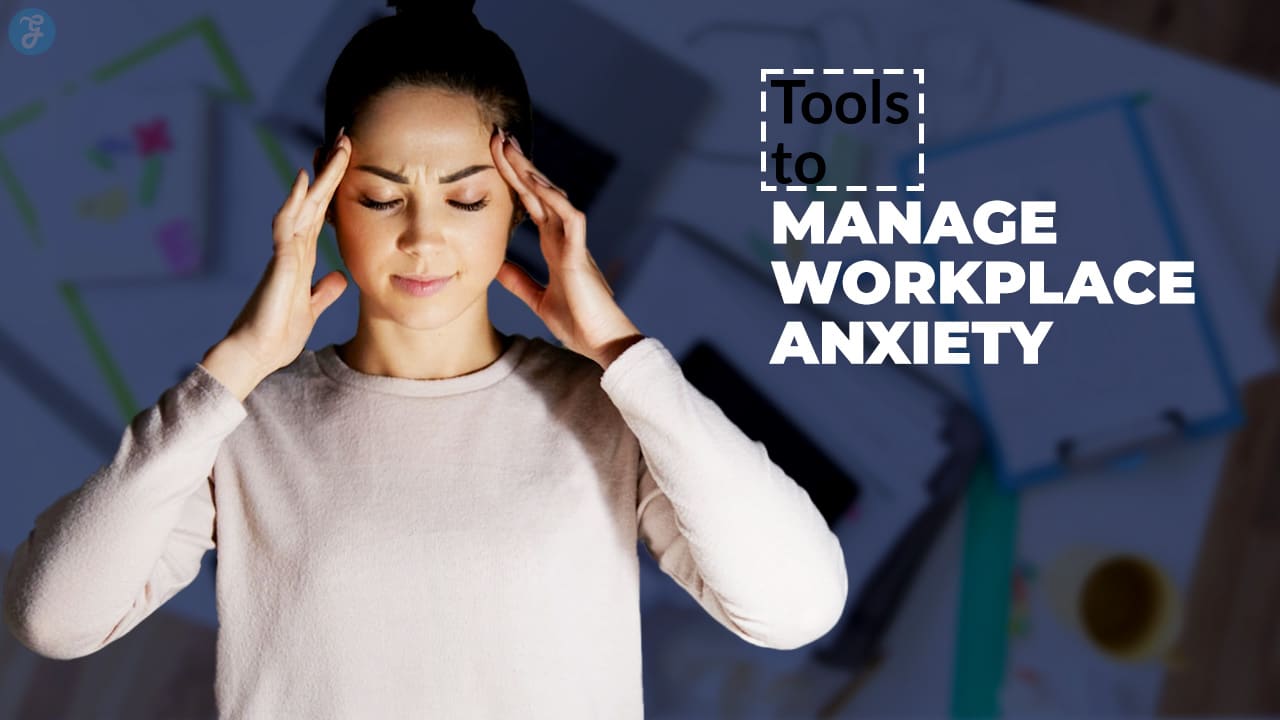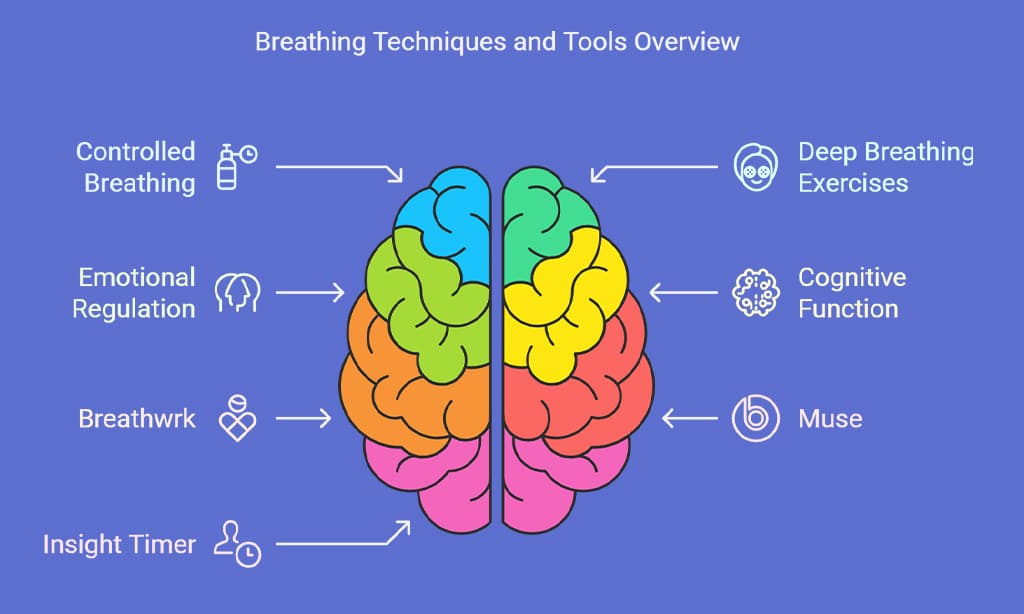Workplace anxiety is a growing concern in 2025, affecting employees’ productivity, mental well-being, and overall job satisfaction. With the increasing demands of hybrid work environments, fast-paced industries, and digital overload, managing stress effectively has become more crucial than ever.
Studies show that nearly 70% of employees experience workplace anxiety, leading to higher turnover rates and reduced efficiency. Fortunately, modern solutions offer practical ways to combat workplace anxiety and create a healthier work-life balance.
This article explores the top tools to manage workplace anxiety, providing insights into how each one can enhance mental well-being, boost productivity, and reduce stress levels.
What is Workplace Anxiety?
Workplace anxiety refers to excessive stress, fear, or worry related to job responsibilities, performance expectations, or interactions with colleagues and supervisors. It can manifest in several ways, including:
- Constant fear of failure or underperformance
- Difficulty concentrating on tasks
- Increased irritability or emotional exhaustion
- Physical symptoms like headaches, fatigue, or nausea
- Declining job performance and increased absenteeism
- Increased reliance on caffeine, alcohol, or other coping mechanisms
Why Managing Workplace Anxiety is More Important Than Ever
The work environment in 2025 presents new challenges that contribute to workplace anxiety. Some of the key factors include:
- Remote and Hybrid Work Stress: Employees struggle with isolation, lack of structure, and blurred boundaries between personal and professional life.
- Technological Overload: Constant notifications, virtual meetings, and digital demands create mental fatigue.
- Increased Job Expectations: Competitive work environments require employees to be highly productive, innovative, and always available.
- AI and Automation Anxiety: Fear of job displacement due to artificial intelligence and automation adds to the pressure.
- Economic Uncertainty: Global fluctuations in job stability and security increase workplace anxiety.
- Health and Safety Concerns: The lingering effects of global health crises contribute to ongoing workplace stress.
Signs That You Need Tools to Manage Workplace Anxiety
- Frequent burnout or emotional exhaustion
- Decreased job satisfaction and motivation
- Difficulty maintaining work-life balance
- Increased absenteeism or procrastination
- Feeling overwhelmed by workload
- Trouble sleeping due to work-related stress
- Heightened sensitivity to workplace interactions and feedback
10 Tools to Manage Workplace Anxiety in 2025
1. AI-Powered Mental Health Apps
AI-driven mental health apps provide personalized support, offering features such as guided meditation, breathing exercises, and cognitive behavioral therapy (CBT) techniques.
These apps use machine learning algorithms to understand user behavior and provide tailored interventions. Some of the best options include:
| App Name | Features | Best For |
| Calm | Meditation, sleep aid, stress tracking | General stress relief |
| Headspace | Mindfulness training, work focus sessions | Workplace mindfulness |
| Wysa | AI chatbot offering mental health support | Personalized emotional support |
| Moodfit | Cognitive behavioral therapy tools and self-improvement tracking | Long-term mental health management |
Actionable Tips:
- Schedule daily meditation breaks using app reminders.
- Use AI-generated stress management plans tailored to personal needs.
- Track mood patterns and adjust activities accordingly.
2. Stress-Tracking Wearables
Smartwatches and biometric trackers help employees monitor stress levels and adopt healthier habits.
These devices use sensors to track heart rate variability (HRV), skin temperature, and oxygen levels to detect stress patterns. Popular devices include:
| Wearable | Features | Best For |
| Fitbit Sense | Tracks stress using electrodermal activity (EDA) | Long-term stress tracking |
| Apple Watch | Mindfulness features, heart rate variability (HRV) monitoring | Daily stress management |
| Garmin Venu | Body energy monitoring and guided breathing exercises | Fitness and mental well-being |
| Oura Ring | Sleep tracking, stress detection, and recovery insights | Holistic health monitoring |
Actionable Tips:
- Set wearable reminders to take deep breathing breaks during work hours.
- Use real-time stress notifications to modify workload intensity.
- Analyze sleep patterns to determine how rest impacts work performance.
3. Virtual Therapy Platforms
Online therapy has become more accessible, allowing employees to seek professional help anytime.
Virtual therapy services are now widely covered by insurance, making them more affordable. Leading platforms include:
| Platform | Features | Best For |
| BetterHelp | Licensed therapists, video/call/text sessions | General therapy needs |
| Talkspace | Workplace-focused therapy, employee assistance programs | Work-related stress |
| Sanvello | Self-care tools, community support, therapy sessions | Holistic mental well-being |
| 7 Cups | Free peer support and low-cost professional therapy | Community-driven support |
Actionable Tips:
- Schedule weekly check-ins with a virtual therapist to discuss work stress.
- Participate in virtual group therapy sessions for workplace anxiety.
- Use chat-based support for immediate assistance.
4. Workplace Wellness Software
Companies are investing in wellness platforms to support employees’ mental health. These platforms provide mental health workshops, self-care exercises, and stress management training. Popular solutions include:
| Software | Features | Best For |
| Wellable | Gamifies workplace wellness challenges | Employee engagement |
| Limeade | Encourages employee well-being through incentives | Corporate mental health |
| Virgin Pulse | Integrates physical and mental health programs | Comprehensive wellness solutions |
| Grokker | Video-based wellness programs, including yoga and stress relief | Holistic well-being |
Actionable Tips:
- Enroll in employer-sponsored wellness programs.
- Use wellness software to track work-life balance improvements.
- Engage in friendly competition through gamified wellness challenges.
.5. Noise-Canceling Headphones
Excessive noise in the workplace can contribute to stress, anxiety, and reduced productivity. Background chatter, phone calls, and office machinery can be overwhelming, making it difficult for employees to concentrate on their tasks.
Noise-canceling headphones help create a peaceful work environment by blocking external disturbances and improving focus.
By integrating these tools, employees can work more efficiently, reduce auditory distractions, and experience a calmer, more controlled atmosphere conducive to mental well-being.
| Headphone Brand | Features | Best For |
| Bose QuietComfort | Industry-leading noise cancellation | Office and remote workers |
| Sony WH-1000XM4 | Adaptive noise control and voice assist | Frequent travelers |
| Apple AirPods Pro | Compact, high-quality noise isolation | Hybrid work environments |
Actionable Tips:
- Use noise-canceling headphones to minimize distractions in a noisy office.
- Pair them with white noise apps for enhanced focus.
- Invest in high-quality headphones that offer adjustable sound settings.
6. Digital Detox and Focus Apps
Digital distractions are one of the leading causes of workplace anxiety, leading to decreased productivity, increased stress levels, and a lack of focus.
The continuous influx of emails, social media notifications, and other digital interruptions can make it difficult for employees to complete tasks efficiently.
Digital detox apps provide structured methods to regain focus, improve time management, and create healthier screen habits.
By incorporating these apps into daily work routines, employees can establish boundaries between work and leisure, leading to better mental well-being and reduced workplace anxiety.
| App Name | Features | Best For |
| Freedom | Blocks distracting websites and apps | Focused work sessions |
| Forest | Encourages phone-free productivity | Habit-building techniques |
| RescueTime | Tracks screen time and productivity | Time management awareness |
Actionable Tips:
- Set daily limits on social media and non-work-related browsing.
- Use app blockers during peak work hours.
- Track screen usage to identify digital distractions.
7. Breathing and Relaxation Tools
Controlled breathing techniques help reduce anxiety, calm the mind, and improve concentration by regulating oxygen intake and heart rate.
Deep breathing exercises activate the parasympathetic nervous system, which counteracts the stress response and helps employees stay composed under pressure.
Practicing controlled breathing regularly can lead to better emotional regulation, enhanced cognitive function, and increased overall well-being.
Integrating breathing techniques into daily routines, especially before high-stress meetings or presentations, can be a simple yet effective way to manage workplace anxiety.
| Tool Name | Features | Best For |
| Breathwrk | Guided breathing exercises | Quick stress relief |
| Muse | Biofeedback meditation headband | Deep relaxation training |
| Insight Timer | Free guided meditation sessions | Mindfulness and stress relief |
Actionable Tips:
- Practice guided breathing exercises during breaks.
- Use relaxation apps before high-stress meetings.
- Create a dedicated mindfulness routine for long-term benefits.
8. Physical Activity and Desk Exercises
Physical movement helps reduce tension and alleviate stress from prolonged sitting and screen exposure. Regular physical activity improves blood circulation, reduces muscle stiffness, and enhances overall mental clarity.
Engaging in movement throughout the workday helps maintain high energy levels, improves focus, and decreases the risk of burnout.
Incorporating even small movements like stretching, short walks, or desk exercises can make a significant difference in managing workplace anxiety and promoting overall well-being.
| Exercise Type | Benefits | Best For |
| Chair Yoga | Improves posture, relieves tension | Sedentary desk workers |
| Stretch Breaks | Reduces muscle stiffness | Long working hours |
| Walking Meetings | Encourages movement, boosts creativity | Hybrid work environments |
Actionable Tips:
- Take 5-minute movement breaks every hour.
- Use a standing desk to alternate between sitting and standing.
- Incorporate walking meetings to stay active while working.
9. Employee Assistance Programs (EAPs)
Many companies offer Employee Assistance Programs (EAPs) that provide confidential counseling, stress management workshops, and wellness initiatives.
These programs are designed to help employees navigate personal and professional challenges that may affect their mental health and job performance.
EAPs often include services such as financial counseling, legal assistance, and work-life balance coaching, making them a comprehensive resource for overall well-being. Organizations that actively promote and integrate EAPs into their workplace culture tend to experience higher employee satisfaction, reduced absenteeism, and increased productivity.
| EAP Provider | Features | Best For |
| ComPsych | Mental health counseling, legal assistance | Comprehensive support |
| Lyra Health | Personalized therapy and coaching | Workplace mental wellness |
| Spring Health | Data-driven employee mental health support | Corporate wellness programs |
Actionable Tips:
- Check if your employer provides access to EAP resources.
- Utilize confidential counseling services when facing work-related stress.
- Participate in employer-sponsored wellness workshops.
10. Flexible Work Schedules and Remote Work Tools
A flexible work schedule can significantly reduce workplace anxiety by allowing employees to better balance personal and professional responsibilities.
Having the ability to adjust work hours, take breaks as needed, and manage workloads efficiently helps reduce stress and prevent burnout.
This flexibility empowers employees to align their work schedule with their most productive hours, leading to improved focus, higher job satisfaction, and better mental well-being.
Companies that embrace flexible work policies often experience increased employee retention and overall workplace morale, fostering a culture of trust and productivity.
| Tool Name | Features | Best For |
| Slack | Real-time communication and collaboration | Remote teams |
| Zoom | Video conferencing for virtual meetings | Distributed workforces |
| Asana | Task and project management | Workflow organization |
Actionable Tips:
- Set boundaries for work hours to maintain a healthy balance.
- Use collaboration tools to stay connected without over-communicating.
- Negotiate flexible hours with your employer to enhance productivity.
Takeaways
Workplace anxiety is a major challenge in 2025, but with the right tools to manage workplace anxiety, employees can create a healthier work environment.
Whether it’s AI-powered mental health apps, noise-canceling headphones, or digital detox tools, the right solutions can significantly reduce stress levels and enhance productivity.
Companies should invest in mental health initiatives, and individuals should explore personalized tools that suit their needs.
Final Actionable Steps:
- Identify which tool best aligns with personal workplace stressors.
- Set achievable goals for reducing workplace anxiety.
- Integrate at least one new anxiety management tool into daily work routines.
- Monitor progress and adjust strategies accordingly.
Start implementing these tools today to foster a stress-free and productive work culture!






































